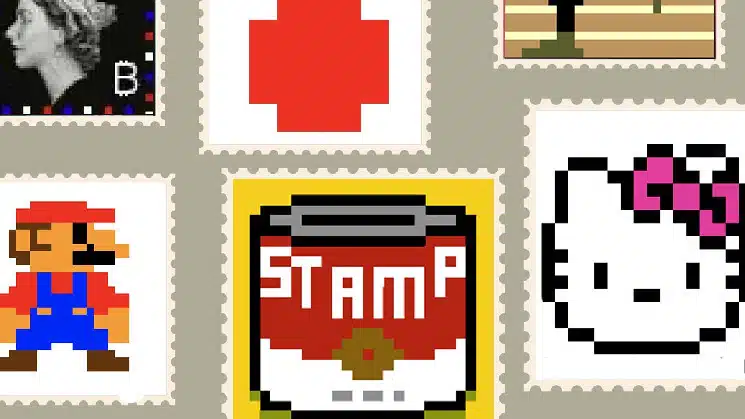Bitcoin stamps are increasingly being utilized as a latest image-storage medium on the bitcoin blockchain. More than 8,000 stamps have been minted so far, showcasing the growing popularity of this trend. This method of image storage is seen as a step forward in proving the utility and versatility of the bitcoin blockchain, which has been a subject of debate among critics since its inception.
In recent times, the technology behind bitcoin, called blockchain, has been progressively making its mark in various industries. A decentralized public ledger system, blockchain enables multiple parties to have simultaneous access to a constantly updated digital record that cannot be altered.
While the potential applications of blockchain are vast and have been extensively researched, its use for image storage is a significant milestone. In particular, some proponents of the technology see the increasing use of bitcoin stamps as a clear sign of how the blockchain can revolutionize the storage industry.
At the core of this emerging trend lies a unique approach to image storage on the bitcoin blockchain, called minting. An image stamp essentially consists of bitcoin along with a digital image file. The image is added to a bitcoin transaction in the form of an OP_RETURN output, which serves as a provably unspendable transaction output.
Once the image is minted, it becomes forever linked to a specific bitcoin transaction. Consequently, the image is stored on a decentralized network, which is the bitcoin blockchain. This allows for the secure preservation of the image file into perpetuity, as the public ledger will always exist as long as the blockchain remains operational.
The growing demand for bitcoin stamps highlights several advantages they offer, especially when compared to traditional image storage methods. These include:
1. Immutability: Unlike conventional storage systems, where images can be altered or tampered with, blockchain-based image storage ensures that the digital records remain unchangeable. This makes it a highly secure and reliable form of storage, as fraudulent activities are virtually eliminated.
2. Decentralization: Traditional storage systems are prone to being compromised due to a central point of failure. However, the decentralized nature of the blockchain eliminates this risk, making it a far more secure method of storing images.
3. Accessibility: Blockchain technology allows multiple users to access information simultaneously, making it easy to share and retrieve images stored on the network. As a result, this innovative storage system is poised to become increasingly popular in the future, particularly in industries that require extensive document sharing, such as healthcare and legal services.
4. Preservation: While traditional storage mediums can become obsolete or degrade over time, blockchain offers an enduring and robust solution for preserving images. By minting an image on the bitcoin blockchain, it is guaranteed to remain intact for the life of the blockchain.
5. Privacy: Images minted on the bitcoin blockchain can be made private, ensuring that only those with the required access can view the stored image. This added layer of security makes it an ideal method for storing sensitive and confidential data.
Despite the numerous benefits, critics argue that using the bitcoin blockchain for image storage is an inefficient and costly process due to the vast amount of energy needed to maintain the network. Additionally, as the number of minted images continues to grow, concerns arise regarding the sustainability of this thriving trend.
To overcome some concerns, developers are considering the use of alternative blockchain networks which have a more eco-friendly footprint, such as Ethereum or other less energy-consuming platforms. This has the potential to make blockchain-based image storage a more sustainable option while further promoting its adoption.
In conclusion, the increasing use of bitcoin stamps as a means to store and preserve images on the blockchain emphasizes the immense potential for this technology to reshape the storage industry. As the world moves toward a more digitalized and interconnected environment, blockchain-based storage solutions can offer numerous advantages over traditional methods, such as enhanced security, accessibility, and preservation. As a result, bitcoin stamps and similar initiatives may signify the beginning of a new era for image storage and become increasingly prevalent in the future.


